#visual object award
Explore tagged Tumblr posts
Text
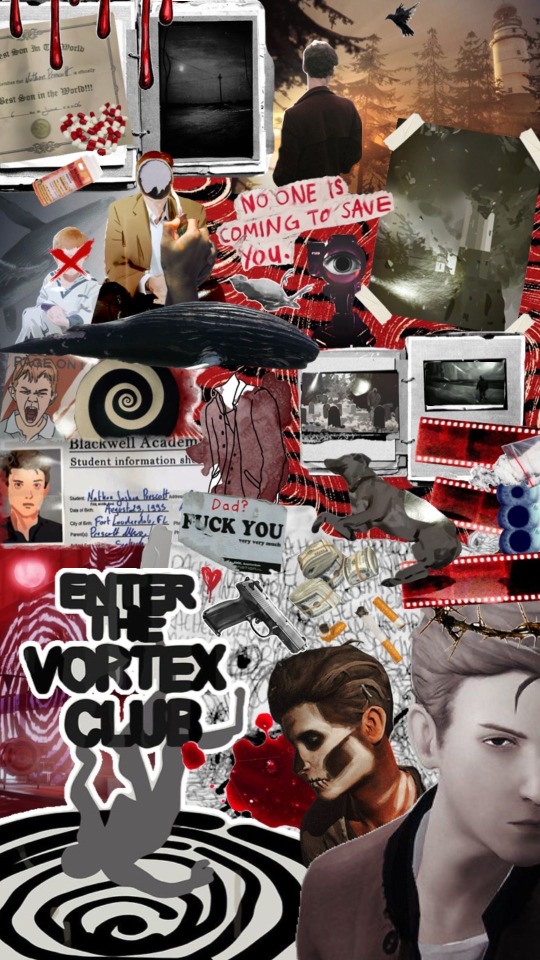
── ⋆⋅ ♰ ⋅⋆ ──
“when will you learn that it isn’t about you and your problems? this is about my name–the prescott name.”
“nathan is everybody’s favorite voodoo doll–kill the rich kid!”
“yes, he takes serious meds–but that’s not his fault, his family treats him like a total freak!”
“i prefer the term ‘manipulated’–i became a sort of father figure to nathan.”
“i think about him chilling out on the grass in the other timeline–i hate what he did, but i can’t hate him.”
“…my life is hell.”
#award for one of the most tragic well written antiheroes of all time goes to#nathan prescott#life is strange#life is strange fanart#nathan prescott fanart#nathan prescott edit#digital collage#lis#MY LOST BOY….#i can’t draw but nathan’s character makes me feel SO many emotions so here have this collage instead#i tried to tell a story without words using objects found in nathan’s room & visual elements that represent him#devil’s in the details fr#pls tell me it worked#for best results view from: top left > bottom left > bottom right > top right#all images used in this are taken only from either ingame screencaps or pngs on pinterest#caption inspired by the greatest nathan prescott edit on youtube ever#soyposting
58 notes
·
View notes
Text
In light of the sad news about Bernard Hill, I feel like we should take a moment to really appreciate the acting performances in the LOTR trilogy. The fact that none of the cast got Academy Awards is well-known and I think even now the sheer visual spectacle of the trilogy can overshadow everything else, but the performances were SO crucial to what made the films great.
It’s easy to take the success of the movies for granted now, but that was never a guarantee. Aside from the practical aspects of portraying such an epic fantasy onscreen, the series is peppered with dialogue that is fine on the page but unbelievably difficult to deliver. As Harrison Ford famously remarked to George Lucas re Star Wars “You can write this stuff, but you can’t say it.”
From Gandalf’s “To the Bridge of Khazad-Dum!” to Elrond’s “It must be cast back into the fiery chasm from whence it came!” it would be so easy for the whole thing to collapse into farce. The only reason it doesn’t, is because of the talent and conviction of the actors.
Bernard Hill was tasked with one of the most objectively ridiculous lines in the entire trilogy. “The horn of Helm Hammerhand shall sound in the deep one last time!” And he delivered. BOY, did he deliver. He gave it all the gravitas and emotional weight of Shakespeare, he made it truly rousing instead of ridiculous, he took the audience with him to that moment, that place, right into Middle Earth with its people and its history, and made it REAL.
And for that, I thank and salute him. RIP, sir. Go now to the halls of your fathers. You earned it.
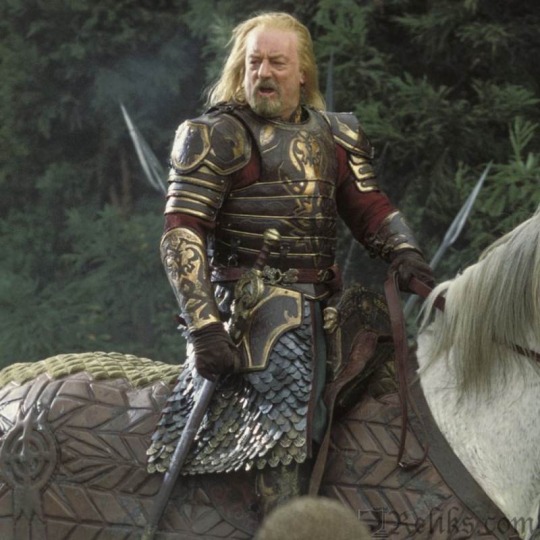
11K notes
·
View notes
Text
UNMANAGEABLE
-ˏˋ a story about trust issues, career warfare & hating the one person you must trust ˊˎ-

"He burns through managers like readers through new books. You fix unfixable cases, scandals. Your partnership is a corporate bomb soon to detonate.”
—or unstoppable force meets unmovable object.

ૢ✧˚ · . quick links ✧˚ · . ૢ
read on ao3
read on wattpad
read author intro and TWs (MUST)

ૢ✧˚ · . synopsis ✧˚ · . ૢ
When HALYX Entertainment makes you Jeon Jungkook's new handler, everyone starts a secret countdown to your resignation. Korea's most brilliant actor has destroyed every manager before you—cold, calculated, and completely unmanageable. Between his trust issues and your pride, this professional arrangement is a corporate death spiral waiting to happen.
But there's something almost addictive about hating someone who sees right through you.

✧ details ✧
main ship: jungkook × f!reader side ships: hani × jihoon and TBD genre: enemies to lovers, corporate warfare, EXTREMELY slow burn (and as usual this is kiki’s work, so = 300k words in no romantic feelings yet, please spare yourself the suffering if you can’t stand agonizing slow pacing), psychological tension rating: explicit (18+ only) chapters: - status: upcoming

ૢ✧˚ · . chapter guide ✧˚ · . ૢ
ko-fi
➵ #snippet 1
volume one: liability & asset management
➵ #01 | ➵ #02 | ➵ #03 | ➵ #04 | ➵ #05 | ➵ #06 | ➵ #07 | ➵ #08 | ➵ #09 | ➵ #10 | ➵ #11 | ➵ #12 | ➵ #13 | ➵ #14 |
lost files
AGENCY INTEL ➵ personnel profiles ➵ halyx handbook ➵ damage reports
BEHIND CLOSED DOORS ➵ press conference fallout ➵ the busan incident ➵ missing schedule notes ➵ hallway standoff ➵ after-hours negotiation ➵ two a.m. damage control
PERSONAL RECORDS ➵ what he won't say ➵ what she won't admit ➵ voice messages ➵ contract margins ➵ three-day silence ➵ after the award show
Key:
Regular titles: current chapters
[WIP]: chapters currently being written
Strikethrough: scheduled for future release
Read order: chronological recommended

✧ content includes ✧
♡ explicit themes ♡ psychological depth (duh, it’s Kiki’s work) ♡ trust deficits and career sabotage ♡ reputation management ♡ destructive coping mechanisms ♡ enemies enemying for basically the whole book ♡ bdsm dynamics

ૢ✧˚ · . extras ✧˚ · . ૢ
✧ playlists:
unmanageable - official soundtrack
songs tab plays in her office after hours
✧ my UM-related art: sketches ✧ pinterest: aesthetics & visuals ✧ moodboards: characters | dynamics ✧ floor plans:
halyx headquarters
jungkook's penthouse
tab's apartment
✧ tidbits/headcanons: here ✧ lyrics: tag with #unmanageablelyrics

✧ disclaimer ✧
please be reminded that members are purely used with visual purposes. this is a work of fiction merely written for entertainment purposes.

© jungkoode 2025 | banner and dividers by dailynnt no reposts, translations, or adaptations
#jungkook fic#jungkook fanfic#jungkook x reader#jungkook x you#bts fanfic#bts fic#jungkook x yn#jungkook x y/n#jungkook fanfiction#bts fanfiction#jungkook smut#bts smut#corporate au#unmanageable#UM#jungkoode#bts x reader#btsjungkook#jeon jungkook x you
192 notes
·
View notes
Text
| Introducing myself in my fame dr ᯓᡣ𐭩


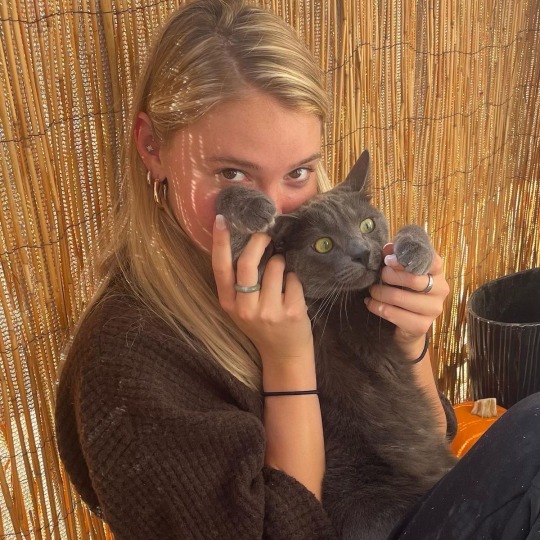
ᝰ. My name is Maeve Amelie Solace, but people usually call me by “Mae”.
ᝰ. I’m 26yo and I’m an A-list american actress and singer. (I was born in 1997 but I didn’t turned 27 yet).
ᝰ. I started my way on acting when I was 16 when my older brother was doing a play on high school and begged me to participate. I did, and since then I’ve been in love with acting.
ᝰ. When I graduated from high school i moved out from my hometown — Austin, Texas — to LA and entered to UCLA School of Theater.
ᝰ. My first big project in Hollywood was “The Edge of Seventeen” when I was 19-20yo, before that I just worked with small projects, mostly from my uni.
ᝰ. That project gave me more visibility in the industry and I became more well known.
ᝰ. Some of my films: The Edge of Seventeen, The School for Good and Evil (adaptation of the books), Lady bird, Scream 4 (2018), Little Woman, Causeway, We Live in a Time, Challengers, Me Before You, Glass Onion 2, Duna, Anyone but You, Don’t look up, No hard feelings, Don’t worry darling, The outrun, and etc.
ᝰ. Some of my shows: Supernatural (Claire Novak), Looking for Alasca, YOU, outer banks (season 4).
ᝰ. I’ve been nominated for the Oscar 4 times as the best Actress in a Leading Role, but I’m just gonna win the award in the 4th time (2024). Futhermore, i’ve won a lot of awards and nominations like Emmy’s and Golden Globes. In 2022, I entered the list of The Most Influential People by Time Magazine.
Now, my singer career:
ᝰ. My mom is a country singer — not much known — in Texas, so I’ve grew up loving music, and I’ve been writing songs since I was 15, but these never turned into real songs, until 2019-2020, when I recorded my EP’s.
ᝰ. My first EP is called “Minor” and it has 7 songs. I released it in 2019 just for fun, was some songs that I’ve been writing during the years. In 2020 I released more 2 EPs, called “Bittersweet” and “Good Riddance”, with 7 and 10 songs respectively, again, just for fun.
ᝰ. Now, my new coming up project on music is my first Album, called “The Secret Of Us”, it has 13 songs (+ 7 from deluxe) and all of them will have a music video, cause my objective is making a visual album.
ᝰ. With my new album, I intend to go on my first tour.
Fun facts about me:
ᝰ. I know ballet and gymnastics cause when my sister was 8 years old she wanted to learn but was scared to do it alone, so I used to go to classes with her.
ᝰ. I have 3 siblings, Will, Kayla and Austin. Will is 2 years older than me, Kayla is younger than me 4 years and Austin is 8 years younger than me. (Another fun fact is that Austin is adopted).
ᝰ. My s/o is Drew Starkey, I met him in a party at Maddie Cline’s house (2021). Also, Madelyn is my best friend and I’m very close to the cast of the outer banks too.
ᝰ. I’m in fact brazilian. I was born there but my family moved to the US when I was 8 — my father is brazilian but my mom is from us, she was in a trip when met my dad in brazil and blablabla — so I have dual nationality. (latinas are better lol). But when I was 14, I moved again to Brazil and lived there for almost 2 years with my aunt before I came back to US.
ᝰ. When I was 16, I made a YouTube channel with my brother Will and we used to talk about the most random things ever (btw it was a flop lol, this channel just came up when we became famous). (another fun fact is that he is also a well known actor, but more on theater plays than on screen).
ᝰ. When I was in high school, I was planning on going to med school — mostly because of my dad, he’s a doctor (my obsession with greys anatomy might got me inclined to that too🤭) — but then I fell in love with acting (when I was 16, like i said) and never quit. Besides that, I’m still very interested with things related to science and human body, stuff like that; most of things that I know are bc of my dad tho.
ᝰ. I’m polyglot. I speak Portuguese, English, Italian, Spanish and a bit of French and Latin. I also know ASL.
ᝰ. I still don’t know how to ride bikes without training wheels cause no one ever taught me (😭).
ᝰ. I love the sea, beaches, everything related to that, it’s one of my favorite places in the world.
mood boards; mood boards details;
─────── ୨ৎ ───────
#shiftblr#shifting#shifting antis dni#shifters#shifting is easy#shifting realities#fame desired reality#fame dr#desired reality#anti shifters dni#shifting community#introducing my dr#shifting is natural#shifting story#shifting blog#reality shifting#shifting script#shifting diary
167 notes
·
View notes
Text
I FUCKING HATE RINGS OF POWER
On fuckass adaptations (i like the castlevania anime) (heavy ranting below)
This is ASTRONOMICALLY random as it’s barely about Castlevania and more about something i normally don’t post about but I’ve been keeping this topic inside me for far far too long.
I fucking despise, as much as i am humanly capable to bear pure hatred, Rings of Power. I always see people complaining about the “Netflixvania” adaptations being terrible, and I do agree that they’re not accurate to the games, but heavens gracious those people have NOT seen what an actual bad adaptation is like. Sure, Castlevania got an inaccurate adaptation, but at least the adaptation, considered as its own piece of media, is decent. good even. Not the greatest thing ever written or that I've ever seen but it was, objectively, well written and animated.
Unlike that jackass shit filled abhorrent abominacion by goddamn Amazon DestroyingArtPrime that is Rings of Power. I don’t mean to hate on people who enjoy it, not at all, but to those who do, I am begging you please raise your standards, honey you deserve better than that. So. So. SO MUCH FUCKING BETTER MAN.
Every single thing about that series pisses me off in ways I wasn't even aware I could be pissed off until my parents forced me to watch it with them because “well it’s lord of the rings!!”. I did enjoy spending time with them (though i was literally, physically coerced to do so) but i so fucking wish we had spent it watching something better cuz the whole experience was beyond frustrating. The fact that it no joke is the most expensive series ever made? Are we being for real?? One. Goddamn. Million. of dollars went into creating that fucking insult to not only Tolkien’s poor dead ass, but to cinema and the art of moviemaking itself. Every single scene is so obviously, clearly edited and oversaturated with after effects and I could count on one hand the scenes that were recorded without a greenscreen. The costumes seriously look like Halloween and Carnival props a single mom on a budget would buy to her kids and I’m not even exaggerating I so very mean it it’s true just LOOK AT THEM VRO SOME OF THEM HAVE PRINTS ON THEM PRINTSSSSSS THEYRE SO OBVIOUS AND THIS IS SUPPOSED TO BE HEAVILY INSPIRED BY MEDIEVAL CLOTHING DAWG I CAN'T DO THIIIIIIIIIIS. Do you think it ends there? NO IT FUCKING DOESNT IT GETS SO MUCH WORSE. If the visual aspects of it were the only thing bad about it i wouldn't be here dumping a textwall but good god merciful above the writing is genuinely enraging. Like its not just personal pet peeves or small stuff level of frustrating, no it’s ENRAGING. Every character is both incredibly arrogant and rude and fucking stupid, yes even the good guys, EXPECIALLY the good guys, actually. The plot is as compelling as one of Jeff Bezos’ shit stained ass hairs and the dialogue is so dogshit and senseless i dont even know how delusional and self centered you have to be to sit down, write that, hear it being acted out and think “ah yes this is a great script”, that goes for the making of the whole series as well.
I won't sit here and explain why exactly it all sucks as i said cuz there’s plenty of youtube videos that do so (sadly some of them are fucking filled with bigotry i want to shoot myself) and i will instead move on to what pisses me of the most.
Some lunatics are actually, seriously saying that RoP has the same vibes as Peter Jackson’s movies.
Yes the same movies that are considered a cinematic masterpiece and classic, the same movies that won awards over awards over awards, the same movies that inspired every single fantasy movie that came after them. I’m well aware they aren’t accurate to the books either, but again, like Castlevania’s first anime, they are GOOD. They are great in fact, and no one can say otherwise without being objectively wrong. That trilogy’s vibes will never ever be reached or equated again, for the very simple reason that art and passion are fucking withering away in today’s world. The costumes for that set of movies were hand manufactured and weathered by the actors themselves CLIMBING UP MOUNTAINS. The weapons used were REAL. REAL, METAL FORGED WEAPONS. VIGGO MORTENSEN ALMOST GOT AN ACTUAL DAGGER THROUGH HIS FACE BECAUSE THE ORC’S ACTOR MISSED. AND YES HE DID BREAK HIS TOE BECAUSE THE HELM HE KICKED WAS REAL, EVERYTHING THAT COULD BE REAL IN THOSE MOVIES WAS. BOOKS, MAPS, EVERYTHING. ALMOST EVERY SCENE OF LANDSCAPES WAS SHOT IN NEW ZEALAND, A REAL PLACE.
Tolkien hated the idea of someone adapting his works, yet i am certain that if he would have seen the Peter Jackson movies, knowing that they were made out of sincere passion and love for his works and as a tribute to it and him, he would have appreciated them. He certainly is rolling in his grave because of RoP though. It’s not just bad, it's soulless. Completely hollow. Filled to the brim with sfx and fake props, even the musical score composed by the same composer who made the Lotr trilogy’s score just sounds plain, not because it’s bad but because it so clearly belongs to something better than that. RoP wasn’t made out of passion for Lotr it was made for mere profit. One of the directors fucking made fun of a Silmarillion fan who simply asked a question about the goddamn Fëanorian crest, in public, for everyone to see. Those people aren’t Tolkien fans, they're soulless evil corporate pigs, they’re everything Tolkien, and I personally, despised and despise.
It genuinely makes me so sad that, as badly recieved as it was, many series and movies AND HELL EVEN BOOKS AND GAMES are eerily like RoP these days, the death of art we’re witnessing is soul crushing and concerning.
#book adaptation#tv series#lord of the rings#rant post#art#writing#amazon#corporate greed#the silmarillion#castlevania#anime#netflix#anti rings of power
35 notes
·
View notes
Text
Recommended Media | 2024 Roundup!
Hey, everyone! I decided to collect a list of my top media of 2024; I'm very picky about how I spend my limited free time, and everything on this list gets a 10/10 recommendation from me!
I don't do reviews often, but I personally prioritize strong storytelling over everything else... though as a professor of animated film, I'm a sucker for strong technical execution, too! The media included on this list were not necessarily released in 2024, either-- I personally experienced them for the first time this year.
Best Shows:
These pieces of media are exemplars of storytelling and objectively excellent technical execution; I'd recommend them to most.
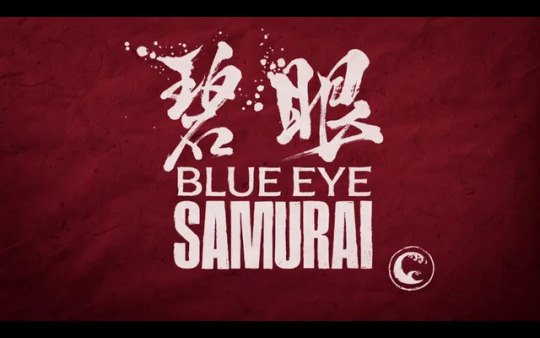
Blue Eye Samurai was captivating from start to finish-- so much so that I watched it three times all the way through! I'm not one to re-watch shows, but this was a true gem. The style didn't draw me in at first, and I'm not a huge fan of the genre, but the tight writing, clear themes, and artistic execution make this a much-watch for me.

Unsurprisingly, Fortiche's Arcane makes the list. Not only did the team do a great job of creating an immersive world and compelling characters, but the art direction on this show has been phenomenally influential in the animation world. Everything-- from the editing, camerawork, animation, voice acting, foley-work, score, and pacing-- is excellent. I use sections of this show in my Master's level courses because the use of film theory is so consistent and well executed!
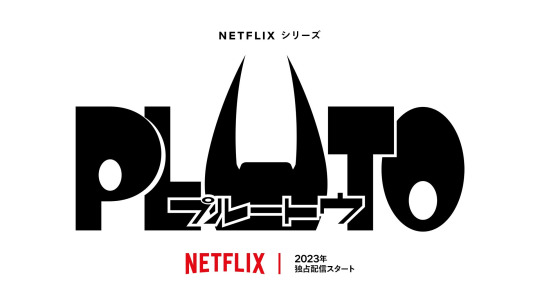
Pluto is a beautifully animated adaptation of the 2003 Award-Winning Manga by the same name that discusses the horrors and aftermath of war through the lens of a futuristic sci-fi murder-mystery. Though it gets off to a slow start-- demanding a three episode investment before it truly has you hooked-- its beautiful visuals and compelling narrative act as a wonderful tribute to a touching and poignant story.
Best Games:
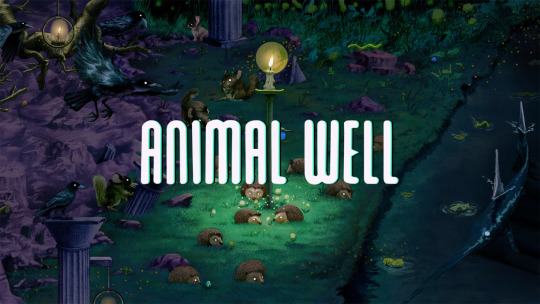
Big Mode's Animal Well is the indie studio's debut title, and as someone who loves story, this game... has none. It's on this list because despite my aversion to story-light games, I could not put it down. It's a reasonably priced, beautifully art-directed puzzler that rewards exploration and experimentation in a way that few modern games do.
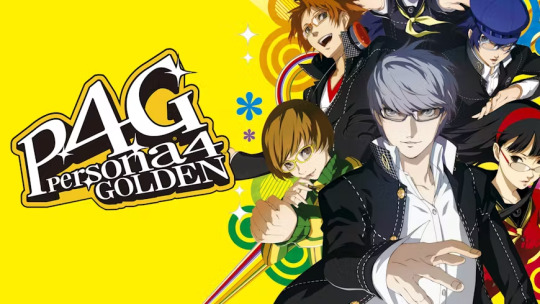
Atlus's Persona 4: Golden has my whole heart. I played Persona 5, enjoyed it, but picked up Persona 4 while on vacation. It is, by far, my favorite Persona game. You arrive in a small, rural town on the heels of a gruesome murder and slowly collected a group of misfit teenagers who are truly struggling to figure out who they are. Every character feels well-rounded, and at over 150 hrs of playtime, this dated title-- available on Switch-- is worth every penny, even in 2024.

Hiding Spot's Beacon Pines is a touching story about a kid slowly unraveling the dark history of his hometown. Though it's a short experience, the mechanics offer a fun and unique twist on the visual novel genre that had me coming back for more over and over again! The art is adorable, the music is sweet, and the story is a compelling delight that gives the player the convincing illusion of agency.
62 notes
·
View notes
Note
Hey. Maybe not the place. But people treat your ask box like a forum so 🙏 I thought I was ace because porn does nothing for me and I only like erotica/doujinshi if I like the characters. But I recently discovered watching wrestling does something for me. Is this really weird? How do I know where I fit?
--
I will gleefully embrace the identity of basement-dwelling gremlin who prefers horny fiction to actually dating or having sex with other people.
But porn tastes aren't what defines sexual orientation.
Neither is willingness to get off the couch.
Are you attracted to people, anon? That's usually how people define the various identities on that spectrum: no attraction, very occasional attraction way below what's seen as commonplace, attraction only when you know someone well, etc. (Which, of course, brings up the question of what level is "normal" and whether someone's judging based on Hollywood nonsense or on what's actually typical.)
For me personally, mainstream porno movies have actors I find un-hot wearing clothing I find libido-killing in ugly environments with bad lighting and camerawork. The scenarios lack the psychological depth needed to interest me, and there's little sense of intimacy.
This has nothing to do with orientation and everything to do with film craft.
Doujinshi of characters I'm already familiar with have a lot more context for what's going on, and this can add a lot of zing to kinks or increase the apparent intimacy.
Wrestling has plotlines. It has deeply charismatic stars. It has different body types than a lot of porn. There's nothing odd about finding it hot but not liking the porno movies you've been exposed to.
Plenty of people prefer all of the horny film festival favorites of the 90s to actual porno movies. It seems like funding dried up for those kinds of movies for a decade or two, but they used to be common.
I preferred the kinkier ones. Crash, for example, was a staple of my teenage viewing. Not the cringey one that won too many awards: the pervert one with the eight billion scenes of people licking each other's scars like they were performing oral.
It really digs into the psychology of kink... in addition to being far more visually beautiful and starring far hotter people than most of the commercial porn I've seen. Same deal with The Pillow Book or ¡Átame! or Maurice or Bound.
I've been seeing articles lately talking about a return to 90s levels of sex in arty movies. People point to the likes of Call Me By Your Name and Saltburn.
Live action commercial porno movies do vary, obviously, but it's just so, so, so common to find them tacky or boring while liking other forms of porn, even other live action sex scenes.
Hell, even for poorly shot stuff, I've never seen even amateur porn capture the vibes of this one long-deleted youtube video of a guy giving a lecture on anal massage and treating his subject like a prop while lecturing to a big group of onlookers.
--
Sometimes, people just aren't very into casual sex, and horny art where they can fantasize about people who actually know each other is better than horny art about the pizza delivery guy. Sure, there are pornos that try to have more plot, but porn stars are generally good at being porn stars, not at subtle and naturalistic acting.
Wrestlers are hardly subtle, but they do do different acting from your average porno, and there's more continuing plotline. Unless you mean... like... college wrestling? (In which case, Kink.com has or had some series where people wrestle to decide who gets to top. Wrestling is hardly a niche interest.)
For kinksters, the context and psychology often matter a lot. Showing an object with a lot of cultural baggage, like shiny black leather, can be hot, but the viewer might need more, and your average porno isn't geared up to provide that.
--
Anyway, if you want to determine your own orientation, your interest in art isn't necessarily going to help that much.
If you're only rarely attracted to people, and you have to know them well first, you could be demisexual, but you could equally well be shy or nervous or depressed or repressed or too busy and stressed to spend much time noticing your own feelings—or just surrounded by people who aren't your type. Only your personal interpretation of your internal experience can determine which it is.
But no, being horny for wrestling is not weird.
137 notes
·
View notes
Text
Reuters’ Ethics and Standards editor told HonestReporting on Tuesday that the wire service “disputes” our “claim” that its journalists had “decorate[d] their office with terror symbols.”
This despite photo evidence we exposed last week showing scarves with terror groups insignias decorating what used to be Reuters office in Gaza in 2013:

The man in the photo is Reuters current Head of Visuals for Gaza, Suhaib Jadallah Salem. The photo still appears on his Facebook page.
Like the Nazi Swastika, the emblems on the scarves are of genocidal groups — Hamas, Islamic Jihad, al-Aqsa Martyrs Brigades — that call for the killing of Jews/Israelis (like some of Suhaib’s colleagues in Reuters).
There are only two bad explanations to Reuters’ disturbing response: ” Either it doesn’t view these proscribed terror groups as such, or it is denying indisputable evidence.
The rest of Reuters Ethics and Standards editor Brian Moss’s official response did not address our exposure of its journalists in Gaza receiving awards from senior Hamas officials.
Instead, it said: “On the basis of a close review by the Reuters Ethics and Standards department, we dispute the distorted evidence and insinuations of bias in the HonestReporting September 5th article. We stand by our coverage of Gaza and our team, who operate within the Thomson Reuters Trust Principles…Further, we dispute any claim that our journalists received ‘de-facto bribes from terrorists.'”
But here are the facts, which HonestReporting stands behind:
Our review of Palestinian media revealed that since 2015, the proscribed terror group has hosted annual ceremonies to honor Gazan journalists who had won prestigious international awards, including photographers from Reuters.
This cozy relationship between Gaza’s terror groups and the journalists tasked with covering them objectively is ethically flawed. It exposes the disturbing entanglement between terrorists and the media, shaping a distorted global narrative about Gaza.
Honored by Terrorists
In 2017, Hamas held a commendation event for international award-winning journalists in Gaza, where it honored Reuters photographer Suhaib Jadallah Salem — the agency’s current head of visuals for Gaza (who was photographed in Reuters office in front of the terror groups’ scarves.)
One of the photos from the event shows Suhaib’s brother Mohammed Jadallah Salem, a Reuters photographer who recently won the Pulitzer prize and the World Press Photo award, receiving Suhaib’s commendation plaque on his behalf. Two senior Hamas officials are granting the plaque: Khalil al-Hayya and Mushir al-Masri:

Al-Hayya has publicly called for a fight against Israel as “the head of the serpent,” and al-Masri has vowed to “uproot The Zionists With Our Axes, Knives, Guns.”
Receiving commendation from such terrorists is a mark of Cain. It should get any journalist disciplined by any respectable media outlet.
Yet Reuters journalists — knowing perhaps that their bosses won’t find out or even care — had no qualms getting into bed with Hamas. Another photo from the event shows other Reuters journalists around a table not too far from al-Hayya: Reuters Senior Gaza correspondent Nidal al-Mughrabi is sitting near Suhaib’s brother Mohammed and photographer Ashraf Amra (who was also honored at the event and exposed by HonestReporting for endorsing infiltration into Israel on October 7). Beside them is Belal Jadallah, who headed the allegedly “independent” Gaza Press House:

Suhaib himself attended a separate Hamas commendation event for journalists later in 2017. This time, he was honored for performing the Muslim pilgrimage to Mecca:

Suhaib received the commendation from al-Masri and Hamas spokesperson Fawzi Barhoum (who have often been interviewed by Reuters), along with the movement’s media officials.
It’s worth noting that four of the Jadallah brothers work for Reuters, in Gaza and Dubai. And the links of the Jadallah family to Hamas go back years. One of the brothers of Suhaib and Mohammed, Sallah, was among the terrorists who kidnapped and killed Israeli soldier Nahshon Waxman in 1994.
The mastermind behind that operation was Moahmmed Deif, who was recently eliminated by Israel. As Hamas’ military chief, Deif was also one of the masterminds behind the October 7 massacre in southern Israel.
If Suhaib and Mohammed were professional journalists, such background wouldn’t necessarily matter. But if they have been hosted and honored by Hamas, it’s alarming.
Unethical Nexus
Top news editors probably know it’s impossible to be a journalist in Gaza without links to Hamas, which controls the information flow. In other words, professional journalism in Gaza is impossible, and news outlets should admit it to their audience.
But being hosted by Hamas, receiving its commendations, and displaying terror groups’ insignias isn’t a case of journalists even trying to be professional. This is an agenda-driven, cooperative, symbiotic, reciprocal, and personal nexus that benefits each side.
A Hamas statement from one of the commendation events said it best:
The media office of Hamas organizes this annual event to honor creative journalists for the fourth year in a row, in appreciation of their efforts in serving the Palestinian cause.
Journalists who violate the agency’s code of ethics by receiving de-facto bribes (or at least benefits) from terrorists to “serve the Palestinian cause,” and decorate their office with terror symbols, are not deserving of international praise or the defense of the Reuters Ethics and Standards department.
#reuters ethics and standards#reuters#reuters ethics and standards editor#media bias#hamas#gaza#suhaib jadallah salem#journalists
81 notes
·
View notes
Text
( ⌨️ ) 𝐊𝐈𝐊𝐈’𝐒 𝐔𝐍𝐏𝐎𝐏𝐔𝐋𝐀𝐑 𝐇𝐄𝐀𝐃𝐋𝐈𝐍𝐄𝐒 ! ⌅ .




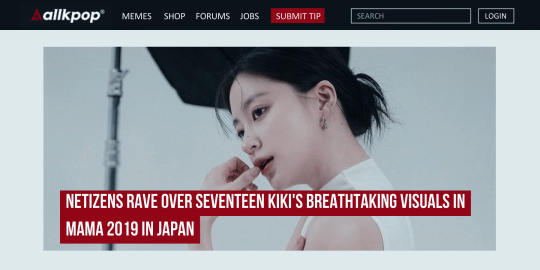
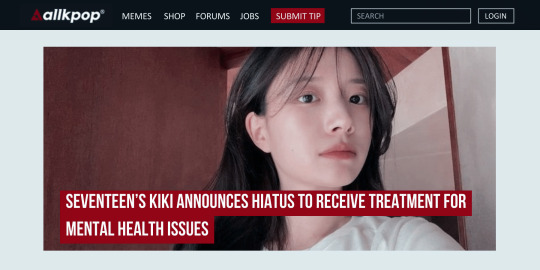

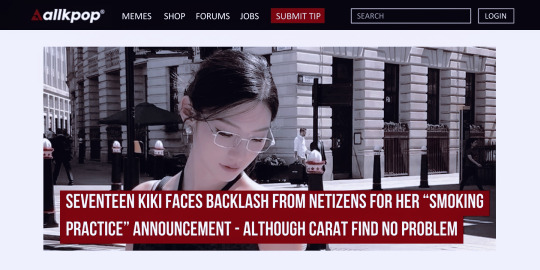
MAJOR MOMENTS
❪ one ❫ ──── YEAR OF 2018 was the beginning of the rollercoaster she never had been before. kiki appeared in produce 48 as the dance trainer this year, and this set the fire for both wide public popularity and the price of fame. at the beginning, she faced with nonchalant backlashes from fans of miyawaki sakura because it looked like she was the only one who opposed to put her into A class.
however, during the program she gained a lot of positive attention from audience due to professional yet soft and kind behavior towards the trainee. she quietly addressed the mistakes and the points they should modify, gave a thoughtful advice but never raised the voice pointlessly. she carefully curated her attitudes and reactions entire time of filming to avoid causing any evil editing. viewers pointed out the amount of time she was on the screen behind the main object of the scenes, often got caught giving advices and training girls more than any trainers, despite the busy schedules as an idol.
❪ two ❫ ──── at the end of the year, she hosted mama 2018 in japan thanks to the reputation through the program. however, at the end of the award show while all of the idols roaming around the stage and greeting with the audience, her high heels broke and kiki needed to get to the backstage for the extra shoes. she took off both of high heels and tried to reach the stairs which was like miles away before wonho noticed her incident and offered her a ride ‘til there. seventeen and monsta x were always super close, so she declined his suggestion in a friendly way, but wonho lifted her up anyway, since he cared about their little sister so much, and she could got hurt in those bare feet. the audience in the venue thought as just “iconic” moment in those award shows at that time. although most monbebe hadn’t any problem with it and the way monsta x boys cherish kiki was certainly famous among the fandom, some of kpop stans brought up the opinion on the table as she’s being “unprofessional” in the award shows.
❪ three ❫ ──── YEAR OF 2019 was the most tough ride among the trails of her career. in march, kiki faced the false bullying accusation from the former pledis trainee. it was quite shocking and back stabbed moment for her, because at that point the ex-trainee, SONG NARI had been working as a back-up dancer for the group about a year. kiki was puzzled, hurt, sad and disappointed all at the same time.
❪ four ❫ ──── however, this false accusation was shut down no longer after, due to several former trainees of pledis, just like SONG NARI herself stood up to clear her name, including LEE GAEUN, SAMUEL, LIM NAYOUNG, KYULKYUNG and JANG DOYOON. also pledis announced the statement to deny the rumour completely right after, so this commotion just proved kiki is innocent and she was loved by all people around her — when you took a glimpse from the outside.
❪ five ❫ ──── it looked like she’s all fine, stunning in her own beauty. MAMA 2019 IN JAPAN was the turning point that laid the foundation for her later reputation as the it girl. kiki’s visual at the night was no joke, red lips and white & black gown highlighted her natural beauty and showcased jaw dropping allure. the whole venue screamed just as she was projected on the display. after the night, she was recognized as THAT GIRL in mama, marked as the most iconic moment at night.
❪ six ❫ ──── of course, the optimistic view only lasted until she announced her first official hiatus from group activity in feburary, YEAR OF 2020. according to the statement issued by pledis, “kiki has recently been undergoing a detailed examination and diagnosis of her health, due to symptoms of distress. after the discussion, all of the seventeen members, including kiki herself, agreed that it would be best for her to take the time to rest and concentrate on the recovery of her psychological well-being.” eventually, she came back after almost a month with her first japanese academy award winning and the announcement her appearance in the upcoming kdrama, “it’s okay to not be okay,” as the lead actress.
❪ seven ❫ ──── unfortunately, netizens hadn’t known how to leave her alone. on april, shortly after her resumption from hiatus, they brought the topic on the table which was her demeanor in the newly published youtube video of her, joshua, hoshi and dino’s bangkok trip in 2019. anonymous commented it’s weird and wild how she’s close with male members in the pool, especially they were just wearing the swimsuits and all three boys revealing their upper body. someone was dare to speak up about the “lovestagram-trap” photos kiki and joshua took for fun, that looked like the lovey dovey pictures of the couples in social media. some of the netizens showcased unpleasant of how “sl!ut” she is, repeating the same old story. however, the thing started slowly changing this time. if it was few years ago, couldn’t really say such opinions were rare. but throughout her career as seventeen, how sincere and thoughtful person she is, her hardworking, finally starts blooming. tons of netizens, not only carats, rage about how it is misogynistic and dumb opinion. they pointed out the basic facts such as they’re in the same group, spent several years under the one roof, still living together as a family. the people who has a common sense and brain cells to think things straightly has her back this time, and kiki also senses the shifting as well.
❪ eight ❫ ──── in the regard of her first drama appearance, kiki made an interesting announcement during the individual live streaming — perhaps, controversial. she said, “there’s some scenes may implies the smoking in the drama i’m shooting right now. it won’t portray the exact moment of inhaling from cigarettes or anything, mostly just holding a lighted one due to avoid the higher ratings for the show. but i thought it would be better if i know how to smoke at least, because if i had no idea, it would look like a fake, you know. there could be a lack of reality. so i thought it would be more nice to let you know beforehand i start smoking practice.” she continued as “i’m aware that cigarettes not always has a good public image, and quite difficult to quit once it became your habit. although i have never interested for smoking, and still is, because it is certainty not good for your health, i discussed with people around me and maybe i can try and see what i can learn from it. i have no intention to be a smoker, but i don’t know about the future... i will try to not to though,” and indicates that she will understand if carats didn’t like this at all, also she could do without making public about this at first place, but someday the picture of something that shows her smoking could appear online and carats would be shocked and surprised more in that way, so wanted to let people know first the actual intention. kiki also added that cigarettes are unhealthy luxury items, so please don’t think it’s cool or anything just because she tries to learn how to.
most carats showed understanding what she said because of the trusted relationship she built with her fans throughout the career, known as one of the most well behaved, thoughtful and attentive person. they can see why she’s doing this. however, subsequently, it became to be considerd as her only scandal or controversial case in her career. some of netizens get in a stew over with it, as “did she quit the idol? no? if not, she shouldn’t acting like the actress.” or “she is ruining the group’s image! someone just kick out her from seventeen already,” while other people, including carats defend her that it’s different than the photo of her smoking in the banned place was leaked or something, most of actors know how to smoke for the sake of the job, so as her, nothing dramatic, and these people are trying to make drama to drag down her reputation.

( 📁 ) : NAVI : MASTER LIST
( tag list ) : @smh-anon @jennwonwoo @angie-x3 @scarlet789
#༝ ( ⌨️ ) ⸺ kiki › . articles#seventeen 14th member#seventeen addition#seventeen added member#seventeen female addition#seventeen oc#seventeen imagines#seventeen reaction#seventeen scenarios#kpop addition#kpop added member#kpop female addition#kpop oc#kpop imagines#idol!reader#idol!au#idol!oc#fictional idol community#fictional idol addition#fictional kpop community#fictional idol oc#fictional kpop oc
46 notes
·
View notes
Text
The Power of Stop-Motion
Media in today's standard is quick and easy. Rarely is a show more than 2 hours long or 13-epiodes per-season. With that, animated movies are a lot slower than the typical films.
There is a discussion on if animation is suitable for film purposes and while it is often shunned by the Golden Globes or the Oscars or other awards. The very few outliers can prove these awards and the world very wrong.
But that is not what we will be talking about today. Because while animation is popular, there is a dark horse among its sphere. One with a rich history and strong filmography that should be shared. Let's talk about;
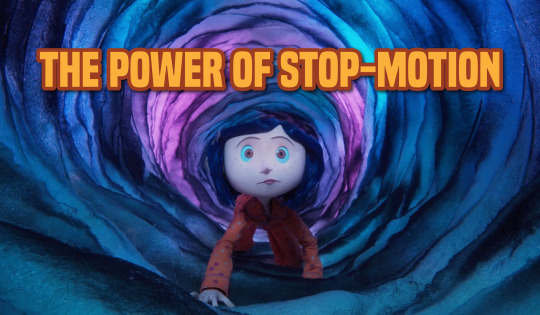
- Have I possibly gone daffy? -
Stop-motion is a film making style that compiles multiple still images of an object being physically manipulated in small movements into one whole scene.
Majority of Stop-motion films and videos use [Clay Animation] or [Paper Animation] with several more varieties of new innovations emerging under the umbrella of stop-motion. The most popular of them in the modern era towards kids is [Lego animation] which is the manipulation of Lego models in motion.

The earliest trace of Stop-motion in films is the 1898 short [The Humpty Dumpty Circus] by Albert E. Smith and James Stuart Blackton which is said to be a lost media. To compensate, please watch [A Tribute to Stop Motion]
In its early concept, Stop-motion was used as a method to create impossible things or do practical effects under budget constrains. Such as the iconic King Kong scene at the Empire State building. Since then, Stop-motion has evolved into a full production industry. From Indies; [Righteous Robot] to Juggernauts; [Laika Studios]
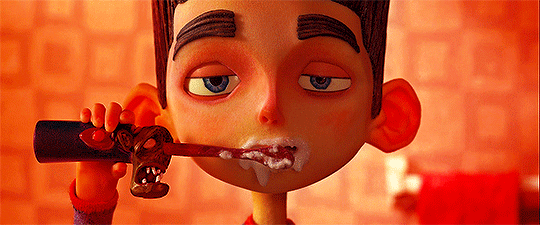
- Shimmer a Little at The Edges -
Unconventional media such as stop-motion is often not a style suited for every story. Its a rather expensive type of media that requires worthy innovations top break the niche barrier. Just looking at Laika Studios alone, we see that they've develop a lot of interesting ways to improve visual effects while staying to their stop-motion roots.
One perfect example is seen in < Kubo and the Two Strings > where the animators need to create water in a still image world that feels natural. [A Perfect Storm] one other part of the stop-motion puzzle is the iron-willed discipline it to conceptualize, animate and edit a production that can take about 3 to 5 years to complete. More so of a time frame than a normal film.
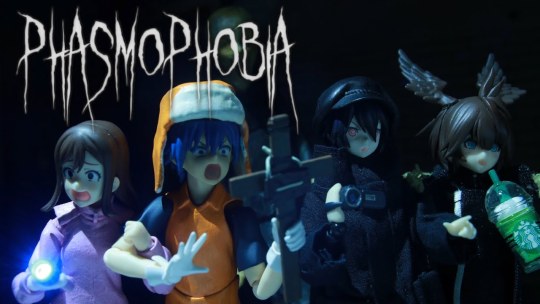
This difficult curve lead to budgeted methods such as using models that already exist to tell new stories. Such as; Legos or with crude multi-jointed figures of existing characters. [MOONSHINE]
While I may say its crude, the low budget production is the selling point. Assisted with sound bites taken from gaming sessions or from shows featuring a lot of inside jokes and memes. Also, its hilarious to see a Teletubby turned into a Eldritch monster.
These attempts to make stop-motion productions accessible has captured the attention of other like-minded channels to collaborate and elevate one another. [ERB: Harry Potter vs Luke Skywalker]

- For Better Tomorrows -
With all that is said, what is the power of stop-motion? As a media that is tediously overlapping across processes. What are the better tomorrows for our inanimate subjects?
I like to think, that as filmmaking grows. Stop-motion will continue to remain as a sacred tug against live action films and traditional animation. It can be used to tell complicated stories with concepts that may look strange if its adapted in a live action.
As I have mentioned in [The Beautiful World of Hilda] animation's greatest strength is simplification. Stop-motion takes the opposite side of that philosophy.
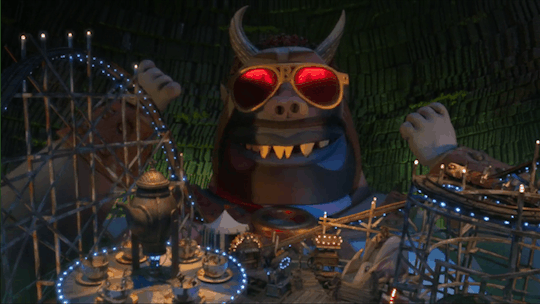
Its a higher level of world building of the materials with willingness to accept mistakes and ruggedness that gives them that little flavor of life. As an actual touchable thing, the various cartoonish styles can take on a whole new dimension to heighten the style and give it that detail that is less polished.
Stop-motion shows that filmmaking magic can still exist despite already knowing the tricks. Its a media where every frame shown has a significant purpose that invokes a specific flow. That's the power of stop-motion.


#stop motion#stop motion animation#coraline#coraline jones#lego animation#clay animation#paper animation#laika studios#paranorman#norman babcock#the lego movie#emirichu#daidus#moonshine animations#pinocchio#guillermo del toro#wendell and wild#Guillermo del Toro's Pinocchio
106 notes
·
View notes
Text
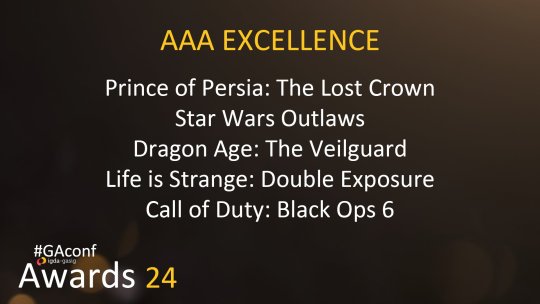
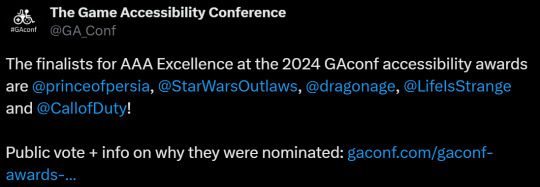
The Game Accessibility Conference on Twitter: "The finalists for AAA Excellence at the 2024 GAconf accessibility awards are Prince of Persia: The Lost Crown, Star Wars Outlaws, Dragon Age: The Veilguard, Life is Strange: Double Exposure and Call of Duty: Black Ops 6! Public vote + info on why they were nominated: [link]" [source]
DA:TV info from link:
"Dragon Age: The Veilguard Highlights include wide range of fine grained difficulty inc. invincibility, configurable combat inc. parry timing & aim assist strength, customisable HUD, text size settings, customisable subtitles, optional audio cues for some visual mechanics inc. incoming attacks, lock-on, and conversation wheels, sim sickness settings, mono audio mode with left/right panning slider, holds to taps, object glint distance & visibility and spatialised ping, world & local maps available at all times, melee/ranged thread indicators, no info by sound alone inc, visual combat/exploration cues, waypoint visibility, detailed codex inc. lore glossary, all spiders removed by default" [source]
[voting link]
#dragon age: the veilguard#dragon age: dreadwolf#dragon age 4#the dread wolf rises#da4#dragon age#bioware#video games
26 notes
·
View notes
Text
Ramon Antonio Vargas at The Guardian:
The Washington Post’s Pulitzer prize-winning editorial cartoonist Ann Telnaes has resigned from her position at the newspaper after its refusal to publish a satirical cartoon depicting the outlet’s owner, Jeff Bezos – along with other media and technology barons – kneeling before Donald Trump as he gears up for his second US presidency. “I have had editorial feedback and productive conversations – and some differences – about cartoons I have submitted for publication, but in all that time I’ve never had a cartoon killed because of who or what I chose to aim my pen at,” Telnaes wrote on Friday in an online post on the Substack platform detailing her decision to quit. “Until now.”
In a statement reported by the New York Times, the Post’s opinions editor, David Shipley, defended the newspaper’s decision against publishing Telnaes’s cartoon, saying he disagreed with her “interpretation of events” and that “the only bias was against repetition”.
“Not every editorial judgment is a reflection of a malign force,” said Shipley, whose statement added that he had spoken with Telnaes and asked her to reconsider leaving. “My decision was guided by the fact that we had just published a column on the same topic as the cartoon and had already scheduled another column – this one a satire – for publication.” Telnaes’s Substack post from Friday contained a rough draft of her cartoon. Beside Bezos, who founded Amazon before buying the Post, the cartoon portrayed caricatures of Meta founder Mark Zuckerberg, Los Angeles Times owner Patrick Soon-Shiong and Walt Disney Co mascot Mickey Mouse.
“The cartoon … criticizes the billionaire tech and media chief executives who have been doing their best to curry favor with … Trump,” Telnaes said. “While it isn’t uncommon for editorial page editors to object to visual metaphors within a cartoon if it strikes that editor as unclear or isn’t correctly conveying the message intended by the cartoonist, such editorial criticism was not the case regarding this cartoon.
“To be clear, there have been instances where sketches have been rejected or revisions requested, but never because of the point of view inherent in the cartoon’s commentary. That’s a gamechanger … and dangerous for a free press.” Telnaes announced her resignation less than three months after the Post and Bezos faced withering backlash over the outlet’s decision to prevent its editorial team from publishing an endorsement of Kamala Harris in the presidential election of 5 November. Soon-Shiong had also similarly refused to allow the LA Times’ editorial board to publish an endorsement of Harris.
[...] Telnaes won the prestigious Pulitzer for illustrated reporting and commentary in 2001 – coincidentally, while working for the LA Times Syndicate – and was a finalist in the same category for the Post in 2022. She also received the National Cartoonists Society’s Reuben award in 2017, becoming the first woman to win both that prize as well as a Pulitzer.
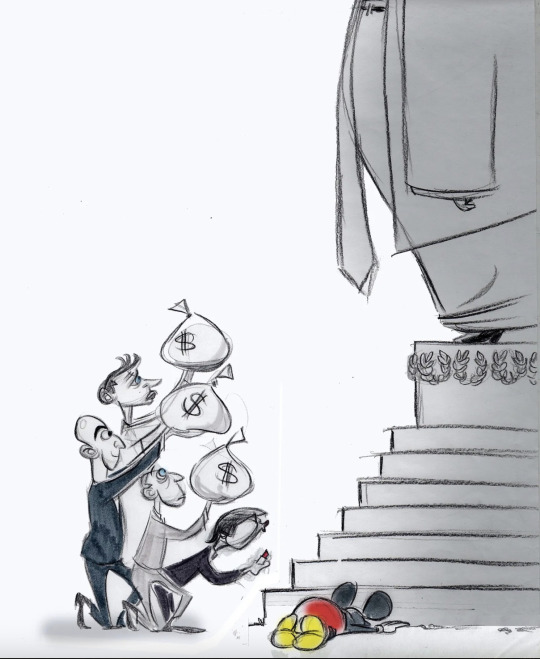
Pulitzer-winning cartoonist Ann Telnaes resigned from The Washington Post over the paper spiking her cartoon that was very critical of its owner Jeff Bezos in that the cartoon depicting Bezos and other tech and media moguls kneeling in front of a Donald Trump statue. The Post’s refusal to publish this cartoon is more proof that many outlets are obeying in advance to Trump’s attacks on the freedom of the press.
See Also:
The Left Hook: Drawing The Ire of Trump and the Broligarchy: A Cartoonist Resigns to Defend The Free Press
#Ann Telnaes#The Washington Post#Jeff Bezos#Editorial Cartoons#Donald Trump#Mickey Mouse#Patrick Soon Shiong#Mark Zuckerberg#War On The Press#Trump Administration II
27 notes
·
View notes
Text



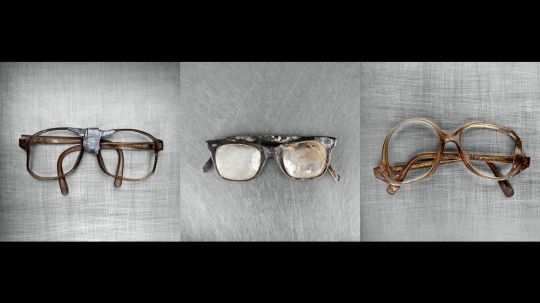



Quest for Identity: #SREBRENICA
“In all their simplicity, these items are the last resort of identity, the last permanent reminder that these people ever existed.” A stark but powerful tribute to the victims of the Bosnian War.
Photographs and text by Ziyah Gafic
We first discovered this work after it was submitted to the Visual Storytelling Awards 2014. Although it was not chosen as a finalist by the jury, the editors of LensCulture were moved by its simplicity and power. In honor of this year’s Visual Storytelling Awards—and to inspire other visual storytellers—we have decided to publish this feature article.
These are simple objects: clocks, keys, combs, glasses. They are the things that victims of genocide in Bosnia carried with them on their final journey. This was the first act of genocide on European soil since the Holocaust.
During the four years of conflict that devastated the Bosnian nation in the early 90’s, approximately 30,000 citizens went missing. Most of them were killed in the early days of the war and towards the end of hostilities, when UN safe zones like Srebrenica fell into the hands of the Serb Army. As part of the process of identifying those who disappeared, personal belongings found with the victims remains have been collected by the International Commission on Missing Persons. The main goal is to identify those lost in the killings—no body should remain undiscovered and unidentified.
#srebrenica#genocide#bosnia#bosna i hercegovina#2024#Paris#olympic#olympic games#OLYMPICS#artists on tumblr#illustrator#war#world war II#vietnam war#civil war#war crimes#drawing#news#book
53 notes
·
View notes
Text
The Definitive Damsel Analysis (if I do say so myself)
(Disclaimer: I know it’s absurdly long, and for that I apologize. I apparently am more unwilling to make cuts than I am to present subpar work. I’m working on it. Only editing I do for my autistic ramblings is copyediting, baby! Whoo! I will be updating this for the Pristine Cut once it comes out and we get even *more* Damsel. Obviously, as I’m sure you can tell from the length, I really like Damsel. There will be all of the bias. It will be great.)
(Author’s Note: For the love of the most high God, it took me like twenty read throughs for me to standardize what I wanted to call the Scorched Grey. Here is a brief list of all the terms I used to refer to her: Scorched Grey, Burned Grey, Burning Grey, Fire Grey, Damsel Chapter 3. Sometimes but not always preceded by “the” or “The”.)
Alright, ladies and gentlemen. I have oft made the statement on here that Damsel is the best route in the game, and this began as me trying to definitively prove that, by microscopically going through the route, I could establish exactly why, it would seem, that Damsel has objective superiority. It sorta… evolved, though, so instead I will be going relatively chronologically throughout, and trying to point out a couple things that all of you know about and maybe a couple things you don’t about the best character in the game. With that preamble out of the way, let’s begin with the goofy stuff, the grab bag if you will.
This will certainly be more personal taste than anything else, but I do think there’s a lot of miscellaneous stuff that Damsel does better than the other chapters. For example, I am convinced that it has the third best music, behind Tower and her routes and then Thorn. I am genuinely obsessed with “It Was Always That Easy”. The basement has some *fantastic* art, and I think that really carries a chapter that is otherwise generally bland when it comes to actual visual activity. It’s really carried by its genuinely perfect dialogue.
Overall, and most importantly, this chapter is the undisputed master of the idea of positive ambience. You know elevator music? How it’s there to artificially increase the cheeriness of an otherwise dreary moment, like a hotel hallway or, yanno, an elevator? Well, this is the chapter that does it perfectly. Everything is designed to make it “nicer” than it actually is. The Narrator even takes that into account when describing the basement. The sound design is fresh and relaxing, the music is uplifting, the Princess’s voice is obviously fantastically done, but also the Voice of the Smitten plays a large role in making it feel “good”. It’s something that exists in order to communicate exactly the feelings it wants the player to feel, which is all warm and fuzzy inside. But let’s move on to the actual content, shall we?
Damsel has *the* best Chapter One and it isn’t even close. Certainly not in the horror department, where I think Beast and Nightmare shine, or even in the whole characterization bit, where the award can only go to Spectre and the masterclass that is her Chapter One. But Damsel has something else to it. Damsel has tragedy, almost Shakespearean in nature. Nobody else has it (except Witch, to some extent, but nowhere close to the same level), nobody manages to reach that connection, there and then broken, to honestly feel for both Princess and Slayer. Allow me to paint a picture of a playthrough.
You are on a path in the woods. At the end of that path is a cabin. In the basement of that cabin is a princess. You are here to slay her. But you don’t do that. That voice itching in the back of your skull, the one you quite literally call Hero, your moral compass even, raises some objections. You don’t want to kill *anybody*. That isn’t something you want to mark yourself with, especially not solely on the word of an individual you just met. For now, violence is a nonstarter.
You enter the cabin. And you hear her voice. And you see her. You even talk with her for a while. The moment is… hypnotizing. Despite the Narrator’s warning of manipulation, well, you cannot help but be manipulated. This is a genuinely nice, sweet, scared Princess who simply wants to be free. You have to save her. It is the right thing to do, it is the… only thing to do. Anything else marks you with the dirtiness of simply being unwilling to help someone in need when you had the full ability to.
You go to get a key. Unsuccessful. The door locks. Even worse. The Narrator is moving from irritating to downright malicious, clearly enjoying recounting the lock of the door. Disgust for Him has been present since you entered the cabin, but it shifts to anger very quickly. That shift continues with full force as you attempt with what little ability you have to save the Princess, even if you don’t quite know how you will get out. The question does not last long. For the shift to anger shifts once more, to a sort of incomprehensible fury.
For the Narrator has crossed a line. Not only has he taken away any semblance of choice, not only has he raised your own knife against an innocent, someone who has been nothing but kind to you, but you are the one who must bear the shame for it. You are the only one who is doing the foul deed in any eyes but your own. Speaking of, the Princess’s eyes are filled with genuine happiness at the moment, as you are finally giving her the freedom she has yearned for such a long time. Yet through no fault of your own, you raise the pristine blade, the one you refused to bring down to the basement in the first place. You scramble through the list of options, attempting to find anything that could provide a sliver of hope in the situation, anything without the grim finality of “Slay the Princess”.
At last, you find one, and are able to bark out a warning to the Princess. That happiness in her eyes is shifted to a look of fear, one directed at you alone, one condemning you with such a sorrowful betrayal that it almost hurts to see. She begs for you to stop, and then she says something that almost calms the internal storm of the player: “Please, I know this isn’t you.” She recognizes that it isn’t us that betrayed her, she understands that we aren’t trying to do this, that we are flat-out trying to stop it. But the eye of that storm is passing, and soon.
And as she takes the blade, as she prepares to do what she must to live, that same look of tragic betrayal crosses her eyes, this time not directed at us, but at herself. She hates that this is her only option, the only way that she can live is to kill another, one with every intention of freeing her and no intention of harming her. And in the end, she simultaneously underscores the tragedy of the moment while confirming our perception that she could never be a threat to the world. As she plunges the blade into our chest, she has failed to even do the bare minimum of making our death painless, something that fills her with even more guilt, tears streaming down her cheeks as she tries and fails to end our own agony. The last thing we see of her are her endless cascade of both tears and apologies, as everything goes dark.
This… is beautiful. A glorious tragedy, one with limited theming, simply two characters with emotions that feel natural. And, quite strangely, the first chapter has almost nothing to do with the second chapter. But it is still important. I’ll get to that later. Better things await now! For with the end of the tale of the Hero and the Princess, we have a new individual, everyone’s favorite buddy, the Voice of the Smitten.
I am certain I do not need to underscore just how popular Smitten is. Easily the most fan favorite of the fan favorites, especially solidifying his place within that roster with the Kiss from a Thorn. He is jovial, passionate, he is Don Quixote, complete with the unlimited self-delusion that comes with the territory. There’s a reason people love him. Romantic in a game entitled a love story, the largest of personalities in a game stuffed with them, he is the storybook hero come to life in a game that has just as much reverence for storybook heroes as the deconstructions of them. In short, he is the visage of likability itself, with all the bombast that comes with that. Yet that is only from a wholly external perspective.
For what I am certain I do need to underscore is just how sinister Smitten is. For all of his likability, the Smitten is also probably the single slimiest voice out of all of them with the possible exception of the Opportunist. This is not a new revelation – people have understood that since the beginning with his frankly disturbing behavior regarding the Princess. What is perhaps more interesting is his relationship with the player. For he is one of the two options that reflect the player at this point within the story. Either the player is trying to do the right thing and free an innocent, or they have somewhat… different motivations.
The former reflects the Hero. Somewhat naive, in many routes somewhat bumbling even, but first and foremost focused on the external. That is, “how can I make a positive impact on the world around me?” As contradictory as it may seem to how the Hero is presented, it’s something of an intellectualist approach. The Hero is trying to find the best possible world and working towards that with all of his might. It is, one could say, devoid of emotion except that determination to change the world, to make it a better place. While the goal remains the same, the path to get there is fundamentally continuously being calculated. The Hero is your conscience, and as such he must *always* work overtime for that.
The Smitten is not that. No, he has made no secret that he is the path of passion. Even when he is generally considered to be a better person, he declares that, “Whatever world would condemn two star-crossed lovers to a cycle of violence and despair isn’t a world worth saving.” His focus is internal, it is on ourself and our romance. There is no extensive study into what is the correct option, there is only what would assist in our relationship, which is somehow ordained by the universe. To put it into understandable terms, Hero is a modern hero while Smitten is a Romantic-era hero.
There’s an important line when going down the stairs that I think speaks volumes about the type of player and playthrough currently occurring. That is “We can still do right by her without all this over-the-top fawning.” *That* is the line of demarcation between the route of the Hero and the route of the Smitten. If you decide to embrace or repudiate the Smitten at that point, I think the route is sealed. I am convinced that the game will continue on in a fixed way based on that philosophy. The point where you must, internally that is, decide if you are doing this out of a desire for what is right, or an infatuation with the Princess.
Now, of course there isn’t anything wrong with taking the path of the Smitten, and it’s personally one of my top points in the game, but whether you admit it or not, you are long past morality being what decides your actions. That has come and gone. Now, the goal is to express the passion of the moment and delve into your romantic relationship with the Princess. I’ll be evaluating each of the routes differently, loosely organized with a focus on how it reacts to the player. After that, I’ll go on into theming of each route one by one and all that jazz.
The path of the Smitten first. The player embraces that he has been sent to save the Princess from her unjust and foul imprisonment above all else. So that is what he does. He marches downstairs, the blade being nothing but a passing afterthought as it is immediately dismissed out of hand. When it comes to the crucial point of “doing right by her”, the justification is made that two things can be done at once, that you can do this for her and do a little bit of fawning on the way. Doesn’t harm anyone.
And with that the basement arrives, and you see the Princess on the floor. She is perfect in all ways. There is nothing wrong with her. And that’s before you start talking to her. When you do begin talking to her, all of the kindness and innocence from Chapter 1 are magnified to the greatest degree possible. She can do no wrong. And, from a meta standpoint, there’s another thing that stands out – it is really, *really* funny. From everything the Smitten says to the “Then I didn’t end the world!” to the Narrator’s (a villain at this point) growing exasperation at your trust for the Princess, it endears you to the moment even more.
Because it’s not only that it’s funny. It’s not only that the Princess is genuinely nice to you. It’s something more than that. Something that I am loath to talk about but will anyway. The Princess is incredibly – *sigh* – **cute** within this chapter. This is objective, with science to back me up, I’m sure. But she is specifically designed to be as heartwarming as possible, and every line makes her more and more into someone who should be saved by you, into, well, a Damsel. While it isn’t explicitly stated, throughout the progression of dialogue, the need to protect her becomes more pronounced. You were already primed to like the Princess, you already internally committed to a romantic future. But after stepping into the bear trap willingly, you cannot escape.
And if you’re anything like me, you are perfectly fine with that. So you take in the moment, you rescue her from her chains and laugh at the way her hands slipped out of the chains and the Narrator’s comical anger at it. It’s all very feel-good, all cleanly written dialogue, and both the Princess and the Smitten are likable, they’re fun, and the Narrator is a fun enough villain for the Smitten and you to unite against. The Hero, if we’re being honest, barely registers, and if he does it’s usually as an extension to the Narrator, as a foil to yourself. And with her finally free, she embraces you, sealing the deal on her perfection.
And after that, something else happens. The deconstruction begins. You want to see if her dialogue has any more of that saccharine present throughout the rest of the chapter, and are immediately rewarded with the “The princess closes her eyes in deep reflection” and the follow up joke. Hungry for more, you click through some more of the dialogue, but something begins to happen. She begins to… unwind. The Smitten seems to reciprocate in turn, to a lesser extent. In fact, she really starts to return to the horror that this chapter was a nice respite from. So you cut your losses, decide to leave with her, and everything returns to normal. Bathed in the glow of your future, you immediately forget about the deconstruction.
After that, you finally get out of the basement, get a genuinely great moment opening the door alongside the Princess, never think twice about clicking “You’re not doing that.” as fast as humanly possible, and finally await the door at the end of the cabin. You finally get your fairytale ending. The princess goes out into the world together with you. You brought her out. And then she is taken by the Shifting Mound in a way reminiscent of her dying. Even if this wasn’t your first playthrough, it still comes as a shock. For the most part, you were being that Romantic hero, living in the moment with your passion. The thought of this happening was gone entirely. This wasn’t supposed to happen. And it *hurts*. And the chapter is over.
The route of the Hero has a different point of view on the whole situation. That’s not to say it’s not easy to get drawn in by the hilarious dialogue and sheer cuteness of the Princess – far from it. It is, after all, what drives the conflict within this. For the Hero, and the player that goes along his path, has one bit of information stand out. That the world ended after the Princess killed you. Now, you can naturally be skeptical of the information, but the Princess isn’t helping her case here. Entirely vague, entirely unwilling to mention anything about it. The only thing she seems to care about is getting on your good side.
Now, you still want to save her. That much is clear. You still don’t take the knife in the beginning, and you saw her Chapter 1 incarnation. She is still a good person, kind and loving. But there are questions raised, important questions. Which is why not all Hero routers get the same ending. There is a conflict between how far you’re able to go before the risk of the world ending eclipses your distrust of the Narrator and your trust of the Princess. If the whole world really does end if she’s free, is it worth it? And as such you get to the major points of the Hero ending.
The first is the Deconstructed ending. As you question the Princess, you desperately try to figure out what the best way to go forward is for you. And that starts with getting a straight answer from the Princess on what exactly she plans on doing. The operation… does not go well. As you try and push for anything, any sign that she isn’t going to end the world, the same rejoinder comes in, alongside a distorted track. “I just want to make you happy.” The Princess is not an individual anymore, and begins to change shape. But you are locked in with a horrified inability to look away, like one who sees a car accident. And with that, the Princess is a Princess no longer, and the Shifting Mound takes her away.
There’s also the option of taking the Hero’s advice when confronted with the scenario: to leave. You don’t like what’s going on and you try to do whatever you can to undo the doing. Perhaps surprisingly, it works. And then you’re forced to deal with the cognitive dissonance of the Princess and *that* being the same individual. But you, not without a healthy dose of skepticism, still head upstairs alongside the Princess. In the end, you can’t bring yourself to kill her. Throughout it all, she still has been the beautifully endearing picture of innocence, if a questionable one, and especially with regards to the knife on the table, there is no way you can take it to her chest with no warning, especially after everything you did in the first Chapter. So you leave with her, and the “end of the world” really does come in one fell swoop with the call of the Shifting Mound. You can’t help but wonder if the decision you made was the right one, not really. Like, you still believe she didn’t deserve to die, but maybe, just maybe, it would have been a better ending.
So what if you did kill her? What happens when love *truly* melts away into skepticism. After the continuous question dodging and whatever the… other thing was, this is clearly not an ordinary Princess, it is not the same Princess that you tried to save at the beginning. There is only a sliver of her, a shadow of her former self. Slaying her, well, slaying her is probably doing her a favor. It might be doing the world a favor, too. Maybe she is an individual with malicious intent. And as you take the blade and plunge it into her chest, you instantly know you made the wrong decision. She does not oppose it. She simply lets you kill her with a single tear hanging in her eye, saying “I think this is what you want.” It’s meant to feel dirty and it does, even heartbreaking in the moment, although it is immediately counterbalanced by the effect of the Smitten killing you over it.
I won’t exactly go over Scorched Grey the same way, I think there’s generally only two frames of mind going into it, and that’s either the standard “Hero-Skeptic” framework that I’ll expand on later, or simply a completionist mindset. Plus, it’s technically not The Damsel. Plus I’m lazy. But this is the point where I will try to expand on the theming of each and every route and mindset to go through within the Chapter, and that *will* include the Scorched Grey theming.
It’s made quite clear from the chapter that one of the primary themes is objectification, the making of the Princess into nothing more than a vehicle to live one’s fantasy into. The taking of an individual and making them into an it. The destruction of humanity by your own desire, and what that says about your desires in the first place. Ironically, this is merely one fourth wall away from the rest of the Princesses, each of them being a piece of fiction that many simply engage with *because* they are an object, but with the Damsel it is directly nodded to within the narrative. One meta-layer is peeled back, if you will.
Nothing hammers this more home than the entirely jarring line that escapes the Shifting Mound’s lips when you ask about the vessel she holds. Unlike the rest of the fragments, which are all given an indication that they have been fulfilled after the Shifting Mound takes them, the only note she has to say is that the Damsel has “served her purpose”. There is nothing that she wished for, as anyone who has obtained the deconstructed ending can attest to. But even in the more standard runs, she is simply a tool to be used and discarded. And there are three general reactions to this line.
The first is the hardcore Smitten route’s preferred choice, denial. “The Princess was far more than an object, she had character, she had kindness, she had motivations from the beginning! The narrative is what is wrong, there’s nothing wrong with the Princess. She. Is. Perfect. Not just from a narrative standpoint but a metanarrative one as well. She has depth, she *is* a character.” All in the hopes that if they insist on it enough, it will become true. The Damsel was not designed to be viewed in a vacuum. There are themes that run through her character, and including negative ones, and the denial of them is a far truer denial of the character than any sort of objectification could ever be.
Then the more moderate Smitten routers get a different response. A slap in the face. They did all of this, they had fun, they laughed with her, they cried when she was taken. They were connected to her, they had a real connection to what she was. One could even accuse them of… loving her. They honest to goodness cared about this Princess, they were invested in her story. Yet, in the end, they also formed her around themselves. They “molded her to love you”. As much as they loved the Princess, that was only because they cut out a piece of the Shifting Mound that they *could* love, a caricature of her true nature. They still took an individual, and despite truly loving her, made her into something that she was not so they could do that very thing. She is not a person. She is a plot device, an individual made to love and be loved with nothing beyond that. She is an object.
Lastly, those who went on the route of the Hero get that same slap in the face, that selfsame bucket of water poured over their heads, but in a different way. They didn’t try to objectify her. They didn’t want anything of the sort. All they wanted to do was the right thing. Right? Yet even in that desire to do the right thing, they still get that same chilling text from the Shifting Mound. They have built an individual just like those who went on the route of the Smitten. Just a different one. Not one who was built around your “glorious romance”, but rather one built around something of a glorious Romance. The need to be a Hero. The desire to do what was right, to save an unjustly imprisoned Princess. The Princess became a plot device in the end anyway, just one that needed to be saved rather than one who needed to be loved.
I want to continue off of that. The player is trying to do nothing more than the right thing, he is simply doing what a Hero should. And that determination to do what is right leads to him getting impacted the most by that line in the ending, the line that implies that whatever right he was doing, he was still being driven by selfishness, by that need to be a Hero. That hits the player right within where it hurts, it almost could be said to strike at the one emotional vulnerability of them. To have your hard work, your pain, your desire for what is right to be considered nothing more than the delusions of a Don Quixote tilting at windmills in order to fight giants, just as lost as Smitten, that doesn’t feel too great. It almost minimizes your struggle, and it is genius. You play as a Hero because you want to feel like a Hero, not because the morality of this world means anything to you. It is stripping that meta-layer down one by one.
But objectification is not the only theme present. While it may seem like something of a potpourri topic to throw in, earlier on the server we were talking about the Damsel in particular’s perceptiveness with regards to perception. When the door shuts and locks, it is the first and only time the Princess gets visibly **negative** in any way during the entirety of the Chapter. Even when you kill her, she still does so with nary a frown on her face. Even as a tear rolls down her cheek, she still smiles. But not at the door. The narration points out quite clearly that she frowns. This is, I reiterate, the only thing that happens. And her response is not “we’re stuck down here”, it is not “I’m unable to leave now”.
What it is happens to be “that’s not supposed to happen”. She recognizes the construct in a way very few allude to within the game. Adding onto that note, within the Scorched Grey chapter, she (correctly) determines the very nature of the construct and that inherent “cycle of violence and despair” inherent to it, even (correctly) determining that the only way to leave was to annihilate that very construct. This is shown even clearer at the other major event at the door. When you ask if the Princess can open the door, the sole question she throws back at you is “Do you think I can?”, and after a response in the affirmative, “Then I can”. In the end, it is quite clear that she is, *heavily* ironically, one of the more aware characters in the game with regards to your circumstance.
While speaking of the Scorched Grey, I think this route also exemplifies another major theme – the nature of the Princess as a being of perception. All routes exemplify one facet of the Shifting Mound: Spectre represents the gravity of her, Tower her divinity, Prisoner the very incarnation in and of itself of her within the construct, and so on. Damsel has something different, though, and that is that she’s just a slippery little fella. Far more than anybody else, Damsel changes throughout her chapters, in ways more pronounced than anybody else. The Shifting Mound declares that we “molded her to love you”, as I quoted previously. That molding takes stage front and center throughout all of our interactions with her.
The most obvious example is her deconstruction, which when her sole true motivation (to leave) is discarded, she begins to break down, unable to offer to the player anything beyond the only desire every other Princess has. With the compulsive need to love the player, etched into her core, there is nothing she can do other than try to add to that love, losing herself within the process. But that is not the only time she changes. Because she is willing to give up that freedom in, well, a heartbeat. Attempting to kill her does not lead to any sort of resistance from her. The one goal she had, staying alive and winning her freedom, is out the window despite being (questionably) willing to kill for it in the last chapter. Now, throughout the Scorched Grey, it’s made clear that she did not, in fact, want to die, that she just wanted to be free together, but the complete unwillingness to save her own life is a stark contrast to the first chapter.
In fact, that perpetually changing nature alongside her being so objectified means that it’s really, *really* hard to figure out her true character. There is very little in her that does not change and very little remaining that isn’t specifically put there by you. She is an eel, wriggling out of your grasp and impossible to pin down, in a large way like the Shifting Mound herself. But… for the most part, there are two facets to her character beyond the already listed themes. And a sharp divide between them.
Chapter One Damsel and Chapter Two Damsel are not the same person. That’s usually true for most of them, but they also usually have some semblance of similarity between their counterparts. The only exceptions I can think off the top of my head are Spectre and *maaybe* Stranger if you want to count that. The rest of them act as exaggerated versions of the existing individuals shown. Chapter One Adversary likes fights. Chapter Two Adversary likes fights. Chapter One Witch is built on the back of distrust. Chapter Two Witch is built on the back of distrust. Everything lines up nicely.
That is not the case for the Damsel. The only thing that you can say with both of them is that they are nice and do not want to hurt you. The Chapter One incarnation (henceforth Princess) is a tragedy of a character that doesn’t want to kill you but still must to secure her own life and freedom against a renegade puppeting you. The Chapter Two incarnation (henceforth Damsel) is a Horror-”Feel-Good”-Comedic-Tragic character that shows nothing about the emotional anguish she went through in chapter one. I love both of them, but they have an unmatched disconnect. And I think that sort of adds to the character. Now, there is absolutely a benefit from an emotional through-line (there’s a reason Thorn is my second-favorite chapter), but in this case, only brief touches to the beginning enhance the story.
The most striking thing is the sense of comedic horror that comes when Damsel just completely ignores any expected trauma from the Princess’s emotional destruction. It, depending on the route you take, either makes you love her character more and more as the humor begins to entrap you, or it begins the process of getting the player unnerved, exactly like the developers wanted. It is a key dividing point in the mindset of the player and the route that they have chosen. The Damsel says nothing about what happened, heck, she barely acknowledges it except to indicate that “You died!”
Secondly, it sets up Damsel as a sympathetic figure while still allowing her to begin establishing herself. Without the setup from the Princess, the player has no idea how to view Damsel, potentially even seeing her as a less on-the-nose Razor, with her comedically hiding her sinister intentions. The Princess allows the player to begin on a note that the Princess is *actually* friendly rather than simply pretending to be so. At the same time, it’s divorced enough that apart from that frame of reference at the beginning, Damsel is still allowed to shine within her own character.
Lastly, and most importantly, it sets her up for the Scorched Grey. The guilt at causing the death of an innocent and the belief that you would be unable to cause the death of an innocent yourself leads her to blame the construct and attempt to bring it down, which seals your fate in the third Damsel chapter, the only time where the two chapters meet in a beautiful climax of Passion going too far and causing pain, in attempt of running away from that very thing, morphing into something that not even the Smitten is able to remain devoted to in an awful tragedy of love being not enough in the end.
Wait, wait, wait. Did I hear “the end” being spoken? At this time of year? Localized entirely within this essay? Well then, it’s time to talk about what puts this saga at pure perfection, shall we? I probably could just use the awesome power of Ctrl + V to get the desired effect, but I still do want to offer my narration, so I’ll compromise and do a bit of both. “Your lover drives a stake into your body. And another. And another. And another. And another. Do I miss your heart because I cannot stand to see it go? But the stakes meant nothing to you. You had a desire, and you set that desire free, you lifting me and me lifting you, forever and ever and ever, consumed by true belief, there was nothing that could hold us back.”
Do I even need to explain why that’s so good? Definitively the best poem in the end, it isn’t even close, especially when coupled with Ms. Goodnight’s awe-inspiring delivery. Did I say that the Scorched Grey was the perfect synthesis of the Princess and the Damsel? I was lying. This is. Every word so lovingly placed, the language sounds like it comes from the pen of God Himself. It is emotionally resonant, the art is beautiful, I have not run into such a short piece of dialogue that outdoes it. Gonna be honest, mostly just wrote up this essay to gush about it. Even now, it is considered by most everyone to be one of the best lines of dialogue in a game filled with magnificent ones.
And the other one, that of the Scorched Grey. It’s simpler, ironically. “I kill you. You kill me. Back and forth we go, faster and faster and faster. I kill you. You kill me. Hollow eyes watch from the dry corners of a memory. A home built on all of the futures that were supposed to be, preserved until the moment of reunion. The fire of the heart sets it all ablaze. I kill you and me.”
This, this right here is one of the most slept on ending poems and it’s not even funny. So fantastic at expressing the heartbreak inherent to the Scorched Grey’s character. I don’t know how you can see the line “A home built on all the futures that were supposed to be”, especially with the Scorched Grey dead and charring in a wedding gown, and not feel *something*. It’s not as good as the standard Damsel stuff, but then again, nothing is. It’s still deserving of more praise than it currently receives, and one of my top three ending poems of all time, only edged out by Prisoner. Gosh, this game belongs in a museum.
Seems I need to debunk some stuff that happens to get a lot of traction regarding those who speculate on Damsel, too. First of all, her character motivation is not guilt nor gratitude. That sort of thing works incredibly well in fanworks, and I’m happy to see it ~~because that means I get to see Damsel in a fanwork~~. It has little to no backing within canon. Damsel is a chapter about the only motivations for the Princess being those put in place by the objectification of the player. There is nothing regarding anything beyond that, and it detracts from the existing, well-elucidated themes that are actually within the chapter. The only sort of substance to them is both Chapter 1 Princess and Scorched Grey indicating guilt for killing you, but that is almost entirely repudiated within the actual Chapter 2.
Speaking of the Scorched Grey, another thing I saw somewhat extensively is that you somehow “taught her” that killing is the way to love one another, and that’s why she kills you in Chapter 3, and I honestly do not know how that gained any traction at all. It’s pretty clear that she views all the death as a pretty terrible and messed up thing and only kills the two of you to escape the cycle of death. It’s spoken of as a means to an end, not an end in and of itself. I am genuinely confused on how this got started, because it really just… opposes the main *in-narrative* themes of the Chapter??? Like, you don’t even have to analyze it, it’s just within the text, plain and simple.
Anyway, I deeply apologize for the length of this once again, look forward to an appendix when Pristine Cut comes out. I’ve already played it because my uncle works at Black Tabby, but I don’t want to spoil it for you gents. If my opinions change massively after playing through the new update from today, I will change that too. Anyway, Damsel is the best character, literally does not do a single thing wrong within any of her chapters, has definitively the best Shifty stuff, and you should invest in her. As more people vocally become willing to throw money at anything related to Damsel, the likelier it is that we get Damsel merch. I need it so badly. Please. Anyway, if anything stands out to you or you disagree, I am begging you to tell me to get my act together and explain what I said wrong, so do that. Also please.
#slay the princess#the damsel#the princess#black tabby games#I spent an ungodly amount of time writing this up#But I honestly think this could be the be all end all work for this tiny character in a tiny game#Also#Seriously#Play Slay the Princess
77 notes
·
View notes
Text
Serpent labret—Mexica (modern central Mexico), 1325-1521 CE
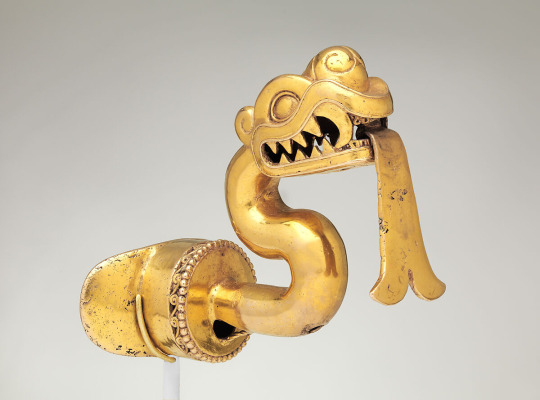
I want to note that although the Met description uses the term "Aztec," the preferred term is Mexica according to what I have read from Mexica people.
According to the Met: "Superbly crafted in the shape of a serpent ready to strike, this labret—a type of plug inserted through a piercing below the lower lip—is a rare survival of what was once a thriving tradition of gold-working in the Aztec Empire. Gold, in Aztec belief, was teocuitlatl, a godly excrement, closely associated with the sun’s power, and ornaments made of it were worn by Aztec rulers and nobles. Historical sources describe a variety of objects made of gold, including a serpent labret sent by Hernán Cortés as a gift to the Holy Roman Emperor, Charles V, yet nearly all of these objects were melted down at the time of the Conquest and shortly thereafter, converted to gold ingots for ease of transport and trade.
The serpent’s head features a powerful jaw with serrated teeth and two prominent fangs. Scales are represented in delicate relief on the underside of the lower jaw. A prominent snout with rounded nostrils rises above the maw of the serpent, and the eyes are surmounted by a pronounced supraorbital plate terminating in curls. On the crown of the head, a ring of ten small spheres and three loops rendered using the technique of false filigree represents a feather headdress with beads. The bifurcated tongue, ingeniously cast as a moveable piece, could be retracted, or swung from side to side, perhaps moving with the wearer’s movements. The sinuous form of the serpent’s body attaches to a cylinder or basal plug ringed with a band of tiny spheres and a band of wavelike spirals. The plain, extended flange would have held the labret in place within the wearer’s mouth.
Labrets, called tentetl in Nahuatl, the language of the Aztecs, were manifestations of political power. The Codex Ixtlilxochitl, an early colonial-period manuscript now in the Bibliothèque Nationale de France, Paris, includes a portrait of the ruler Nezahualcoyotl in full warrior attire, complete with a gold raptor labret (fol. 106r). Nezahualcoyotl was the lord of Texcoco, one of the three cities that formed the Triple Alliance, the union at the core of the Aztec Empire formed by the Mexica of Tenochtitlan, the Alcolhua of Texcoco, and the Tepaneca of Tlacopan. The Aztec title for the royal office was huey tlahtoani, or "great speaker," and the adornment of the mouth was highly symbolic. According to Patrick Hajovsky, a scholar of Aztec art, labrets were the visual markers of the eloquent, truthful speech expected of royalty and the nobility. Crafted from a sacred material, a labret such as this would have underscored the ruler’s divinely sanctioned authority, and asserted his position as the individual who could speak for an empire. Not surprisingly, therefore, the insertion of a labret was part of a ruler’s accession ceremony.
Labrets were also closely associated with military prowess. Specific types of labrets were awarded to warriors based on certain achievements. Gold ornaments, however, appear to have been restricted to royalty and the highest ranks of the nobility, although on occasion gold ornaments could be given by the king as gifts to provincial rulers. Because of its imperviousness to decay, gold would have been an appropriate material to suggest the enduring power of rulers. Such labrets would not have been worn on a daily basis, but rather as part of ceremonial or battle attire donned on specific occasions. Worn on ritual occasions and on the battlefield, this labret, like its wearer, a serpent ready to strike its prey, would have been a terrifying sight.
Serpents have been a favored subject in Mesoamerican art from at least the second millennium B.C. As creatures that could move between different realms, such as earth, water, and sky, they were considered particularly appropriate symbols for rulers and mythological heroes such as Quetzalcoatl, the legendary "feathered serpent." The combination of the curled eyebrow and snout, along with the feathered headdress, may mark this creature as Xiuhcoatl, a mighty fire serpent conceived of as an animate weapon of the Aztec sun god, Huitzilopochtli. Stylistically, this labret has much in common with works in other media, from monumental stone sculptures to a turquoise mosaic double-headed serpent pectoral now in the British Museum (AOA AM 94-634).
Although gold working developed relatively late in Mesoamerica (after AD 600), metalsmiths developed innovative approaches in different regions and produced works of great artistry and technical sophistication. Oaxaca, one of the major sources for gold, was also long considered one of the primary centers for the production of gold objects. Recent research by Leonardo López Luján and José Luis Ruvalcaba Sil, however, has revealed an important gold working tradition in the Basin of Mexico. Small cast gold bells and ornaments of hammered sheet metal have been excavated at Mexico City’s Templo Mayor, or Great Temple, the sacred center at the heart of the Aztec Empire. The finds there include a bifurcated tongue fashioned from sheet gold, and cast-gold bells that once adorned a wolf and an eagle, animals that were sacrificed and placed in one of the Templo Mayor’s dedicatory caches.
Outside of the Templo Mayor finds, the majority of the Aztec works in gold that have survived—including this labret—are ornaments for the royal or noble body. Most Aztec labrets are plain obsidian or greenstone plugs (see, for example, MMA 1979.206.1090-1092), although exceptional examples were made in the form of raptors such as eagles (MMA 1978.412.218; Saint Louis Art Museum 275:1978; Museo Civico di Arte Antica, Turin; see also one in jadeite, MMA 02.18.308). Another serpent labret, possibly from Ejutla, Oaxaca, is now in the National Museum of the American Indian in Washington, D.C. (18/756).
This serpent labret, perhaps the finest Aztec gold ornament to survive the crucibles of the sixteenth century, is an exceedingly rare testament to the brilliance of ancient Mexican metalsmiths. Monumental sculpture in stone, ceramic vessels, and other more durable forms of cultural production shed light on key aspects of Aztec ritual and daily life. But gold, in its infinite ability to be transformed, melted and re-worked, could always be remade to suit current needs, and thus rarely survives from antiquity. Though small, this masterpiece opens a window into Aztec culture at the very highest level, a world almost entirely obliterated when Hernán Cortés arrived on the shores of Mexico in 1519."
12 notes
·
View notes
Text

8 Summer Reads For Creative Inspiration
Summer is the perfect time to relax, recharge, and dive into inspiring books that can fuel your creative spirit!
Whether you're passionate about design or you're a design professional, there are numerous books out there that can provide you with fresh ideas, and the motivation to push your creativity. In this article, we bring you eight must-read books that will spark your creativity and leave you feeling inspired. So grab your favorite drink, find a cozy spot, and let these books transport you to a world of creative brilliance!
Palette Perfect for Graphic Designers and Illustrators: Colour Combinations, Meanings and Cultural References by Sara Caldas

Both a practical and inspirational book filled with color combinations for any design and illustration project. The use of color and its combinations creatively in illustration, graphic and product design also implies understanding what emotions they convey and how they affect our design and illustrations.
Purchase on Bookshop.org — $28 (On Sale) —
Creative Spaces: People, Homes, and Studios to Inspire by Poketo
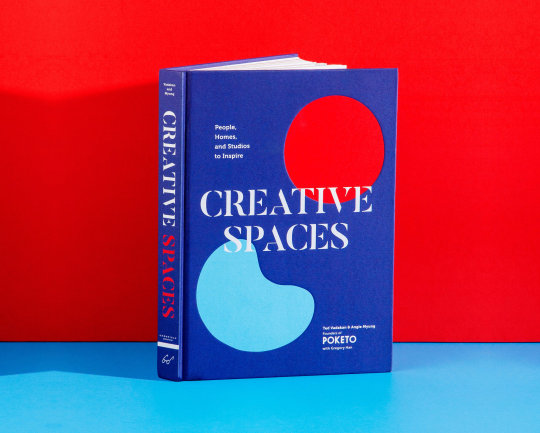
The debut book from acclaimed Los Angeles lifestyle brand Poketo! Creative Spaces: People, Homes, and Studios to Inspire explores the lives, homes, and studios of 23 artistic entrepreneurs, authors, and designers. From a colorful desk in a tiny closet to expansive homes, Creative Spaces features a collection of unique interiors from across the country.
Purchase on Bookshop.org for $33 (On Sale)
—
Soft Minimal by Norm Architects: A Sensory Approach to Architecture and Design

Norm Architects' humane simplicity creates environments that feel as good as they look. Guided by ideas of well-being, the essence of NA' style is balance: richness focused by restraint, simplicity imbued with warmth, and complexity heightened by order. Be it architecture, interiors, or furniture, Norm's unique brand of soft minimalism speaks to the mind as much as the body, creating spaces for people.
Purchase on Bookshop.org for $84 (On Sale)
—
Why Design Matters: Conversations with the World's Most Creative People by Debbie Millman

The author, educator, brand consultant, and host of the widely successful and award-winning podcast Design Matters showcases dozens of her most exciting interviews, bringing together insights and reflections from today's leading creative minds from across diverse fields.
Purchase on Bookshop.org for $56 (On Sale)
—
Accidentally Wes Anderson by Wally Koval

A visual adventure of Wes Anderson proportions, authorized by the legendary filmmaker himself: stunning photographs of real-life places that seem plucked from the just-so world of his films, presented with fascinating human stories behind each façade. Purchase on Bookshop.org for $35 (On Sale) —
How to Live with Objects: A Guide to More Meaningful Interiors by Monica Khemsurov and Jill Singer
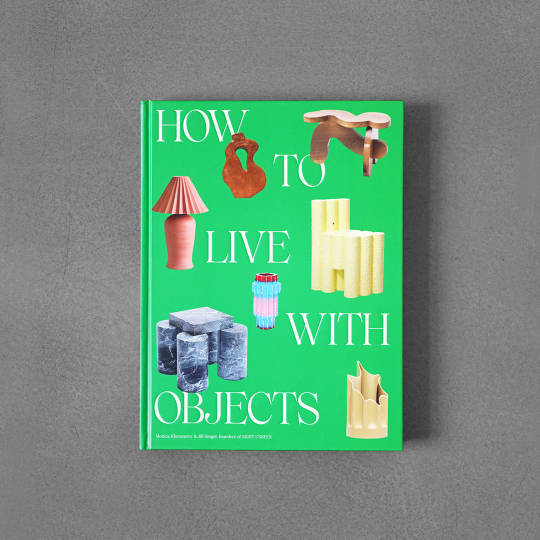
In the modern home, it matters less whether your interior is perfectly appointed and more if it's authentically personal, unique, and filled with the objects you feel a connection to. Through inspiring home tours and practical advice on how and what to collect, Monica Khemsurov and Jill Singer take you on an educational and highly visual journey through the questions at the core of their design philosophy. Purchase on Bookshop.org for $56 (On Sale) —
Hayao Miyazaki by Jessica Niebel
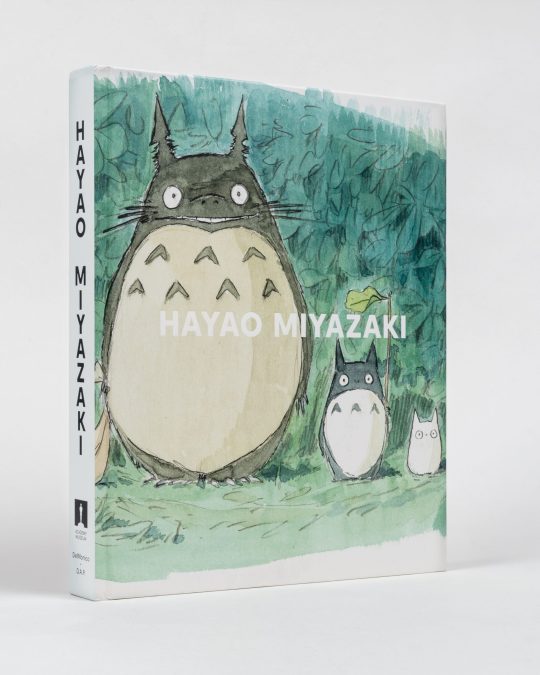
A richly illustrated journey through the extraordinary cinematic worlds of beloved filmmaker Hayao Miyazaki. Introducing hundreds of original production materials, including artworks never before seen outside of Studio Ghibli's archives. Concept sketches, character designs, storyboards, layouts, backgrounds, and production cels from his early career through all 11 of his feature films.
Purchase on Bookshop.org for $51 (On Sale) —
Dot Line Shape: The Basic Elements of Design and Illustration by Victionary

Going back to basics, DOT LINE SHAPE is a comprehensive collection of projects that manifest the three elements in inspiring and ingenious ways to bring unique creative visions to life. No matter how trends or platforms change over time, they serve as timeless components that provide designers and artists around the world with infinite means of expression to make a lasting impact.
Purchase on Bookshop.org for $42 (On Sale) —
If you're interested in finding more books on design, art, interiors, architecture, and more, check our Bookshop.org profile for more amazing recommendations!
#thedsgnblog#design#graphicdesign#designbooks#editorialdesign#bookdesign#print#interiordesign#inspiration
128 notes
·
View notes